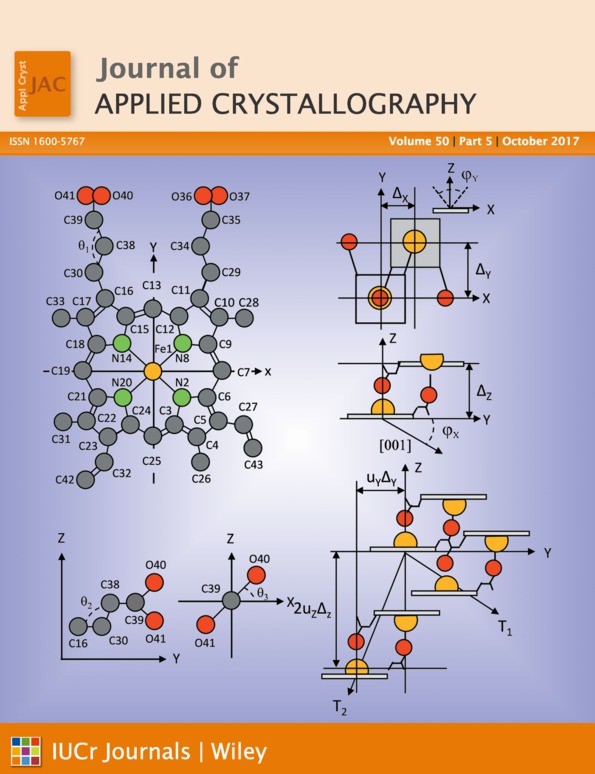A new model for the description of X-ray diffraction from mosaic crystals for ray-tracing calculations
Abstract
This paper presents the development of a new reflection model for describing X-ray diffraction from mosaic crystals. In contrast to the well established diffraction model of Zachariasen [Zachariasen (1994), Theory of X-ray Diffraction in Crystals. Mineola: Dover Publications], it gives additional information on the spatial reflection behaviour and not just on the depth-integrated reflectivity of the crystal material. The new reflection model enables a concrete description of mosaic crystal performance in an arbitrary X-ray spectrometer configuration. Multiple reflections inside the crystal are described by splitting the calculation into a discrete number of reflections. Hence, the influence of each number of reflections is investigated, leading to a laterally resolved solution for the reflectivity. In addition, the model can use a mosaicity of arbitrary shape. This is important because the present work uses a Lorentzian-shaped mosaicity instead of a Gaussian one, which is usually the case in the most widely used simulation programs. A comparison between the new model and that of Zachariasen is performed, and it predicts a similar integrated reflectivity with a deviation lower than 0.7%. Further, a ray-tracing simulation with multiple reflections based on the new model is compared with a measurement, showing a deviation of lower than 5%.




